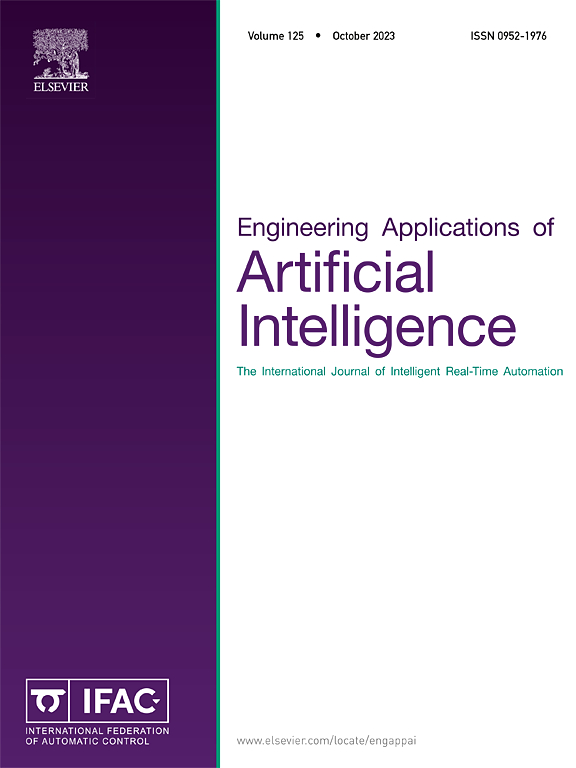IF 7.5
2区 计算机科学
Q1 AUTOMATION & CONTROL SYSTEMS
Engineering Applications of Artificial Intelligence
Pub Date : 2025-04-05
DOI:10.1016/j.engappai.2025.110648
引用次数: 0
摘要
驾驶员的休息时间对确保安全和效率,进而确保运输系统的成功率起着至关重要的作用。疲劳驾驶的司机更容易发生事故和失误,因此必须将他们的休息时间纳入运输规划。此外,时间窗口限制也对运输系统的效率起着重要作用。尽管驾驶员休息时间和时间窗口限制非常重要,但现有研究尚未将其纳入运输模型。为了弥补这些不足并提高运营绩效,本研究引入了一种新颖的多目标、多项目四维绿色运输模型,该模型同时纳入了驾驶员休息时间和时间窗口限制。鉴于在特定时间框架内预测市场需求和其他运输相关参数的复杂性,该模型的参数用梯形模糊粗略数表示。为找到最佳折中方案,提出了一种基于中性编程的新方法,即 "与理想方案相似度排序的中性技术(TOPSIS)"。通过解决一个实际的工业问题,证明了这种方法的实用性。对比分析表明,中性 TOPSIS 方法产生了最有效的帕累托最优解。结果显示,与现有方法相比,运输时间减少了 10.85 小时,碳排放量减少了 21.36 千克。此外,研究结果表明,如果不考虑司机的休息时间,运输时间可减少 15.9 小时,但碳排放量却增加了 591 千克。最后,概述了未来研究的可能途径。本文章由计算机程序翻译,如有差异,请以英文原文为准。
Chance constrained programming for sustainable four dimensional fuzzy-rough transportation problem with rest period of drivers and time window constraints
The rest period of driver plays a critical role in ensuring both safety and efficiency, and hence the success rate of a transportation system. Fatigued drivers are more prone to accidents and errors, making it essential to incorporate their rest time into the transportation planning. Additionally, time window constraints, which define specific time frames for deliveries, play a significant role in the efficiency of transportation systems. Despite their importance, existing research has yet to integrate both driver’s rest period and time window constraints into transportation models. To address these gaps and improve operational performance, this study introduces a novel multi-objective, multi-item four-dimensional green transportation model that incorporates both driver’s rest period and time window constraints. Given the complexities of predicting market demand and other transportation-related parameters within specific time frames, the model’s parameters are represented as trapezoidal fuzzy-rough numbers. A new methodology, “Neutrosophic Technique for Order of Preference by Similarity to Ideal Solution (TOPSIS)”, based on neutrosophic programming, is proposed to find an optimal compromise solution. The practicality of this approach is demonstrated by solving a real-world industrial problem. A comparative analysis shows that the Neutrosophic TOPSIS method yields the most effective Pareto-optimal solution. The results reveal a reduction of 10.85 h in transportation time and 21.36 kg in carbon emissions compared to existing methods. Additionally, the findings reveal that excluding the driver’s rest period reduces transportation time by 15.9 h but increases carbon emissions by 591 kg. Lastly, the possible avenues for future research are outlined.
求助全文
通过发布文献求助,成功后即可免费获取论文全文。
去求助
来源期刊

Engineering Applications of Artificial Intelligence
工程技术-工程:电子与电气
CiteScore
9.60
自引率
10.00%
发文量
505
审稿时长
68 days
期刊介绍:
Artificial Intelligence (AI) is pivotal in driving the fourth industrial revolution, witnessing remarkable advancements across various machine learning methodologies. AI techniques have become indispensable tools for practicing engineers, enabling them to tackle previously insurmountable challenges. Engineering Applications of Artificial Intelligence serves as a global platform for the swift dissemination of research elucidating the practical application of AI methods across all engineering disciplines. Submitted papers are expected to present novel aspects of AI utilized in real-world engineering applications, validated using publicly available datasets to ensure the replicability of research outcomes. Join us in exploring the transformative potential of AI in engineering.
 求助内容:
求助内容: 应助结果提醒方式:
应助结果提醒方式:


